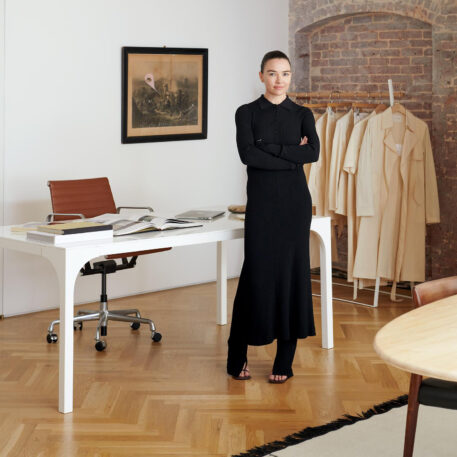
13 Feb How Maria McManus built a luxury label without compromising the planet
These days, every brand—from H&M to Prada—touts its eco-friendly practices.
Maria McManus has seen many of these efforts play out. But over the course of two decades in senior roles at Ralph Lauren, Club Monaco, and Rag & Bone, she had become frustrated that brands launched eco-friendly individual products or capsule collections. These projects get a lot of press, but it wasn’t creating the kind of profound impact she wanted to achieve. “Nobody was really integrating sustainability into their big picture strategy or finding better processes at the beginning of their product development calendar,” she says.
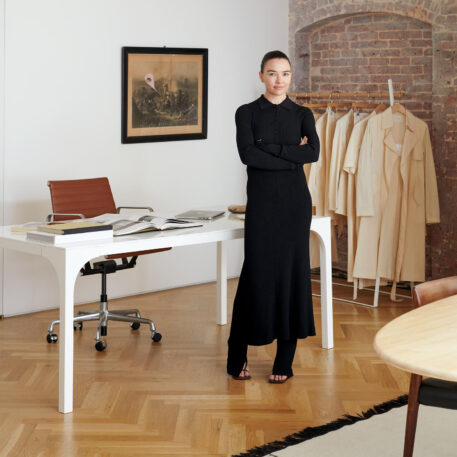
Five years ago, that frustration grew so overwhelming that McManus decided to strike out on her own. In 2020, she unveiled her eponymous label, where she had the freedom to prioritize the sustainability of the supply chain from day one. Her new brand has been a hit. It’s sold at Nordstrom, Bergdorf Goodman, and Selfridges, and is popular with tastemakers like Christy Turlington Burns, Gwyneth Paltrow, and Jennifer Lawrence. Last Friday, at New York Fashion Week, she showed her latest collection in a fashion show that was full of classic garments with a slight twist: trench coats with a voluminous drape at the back, polka dot cardigans with little slits at the wrist, and simple column dresses with multiple straps.
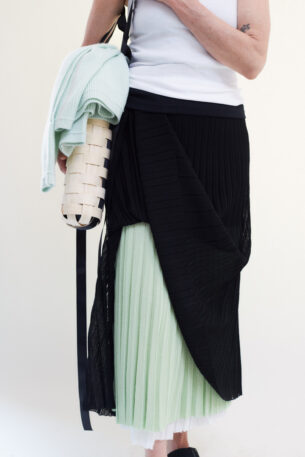
In building her company, McManus has discovered just how much effort and time it takes to make products ethically in the complex global fashion supply chain. But she’s managed to create a fully traceable collection made from sustainable fabrics—all while making money. By the end of this year, she expects the brand to be profitable. Now, McManus wants to show the rest of the industry that it is possible to create a successful business that prioritizes the planet.
What does sustainable fashion even mean?
As a fashion industry veteran, McManus understands why it is so hard for large fashion houses to retrofit their supply chains to make them more sustainable. Creating garments with a lower environmental footprint requires time, effort, and perhaps most crucially, more money. “It comes down to margins,” she says. “Shareholders and business partners don’t want to hear this. And if you increase prices, you’ll upset customers.”
Federica Marchionni, the CEO of the Global Fashion Agenda, a nonprofit committed to making the fashion industry a force for good, believes we’re at a crucial moment in the sustainable fashion movement. Many brands are genuinely interested in becoming more eco-friendly, but because sustainable textiles and process are still in their infancy, the price is sometimes prohibitive. “In every era of innovation, creating an economy of scale is important,” she says. “With sustainable practices, we’re not quite there yet. It will take time for them to reach mass market scale and lower prices.”
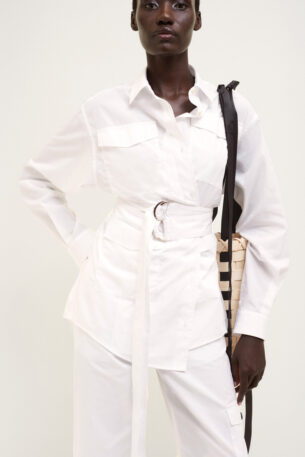
McManus launched her own label so that she wouldn’t have to deal with the cost pressures she felt at other companies. As she mapped out her priorities, they included making sure all workers involved in the supply chain—down to the farmers—earn a fair living wage. She also wanted to reduce waste by manufacturing in small quantities.
The most complex part of the process was finding textiles that are less polluting, such as organic cotton, recycled cashmere, and buttons made from biodegradable plastic. But as McManus quickly discovered, many suppliers make promises about the sustainability of their materials, but it can be hard to tell whether they’re telling the truth. McManus expects all of her partner factories and mills have third party certifications about everything from labor conditions to how the materials are made. But even then, McManus has found that sometimes certifications can be deceptive.
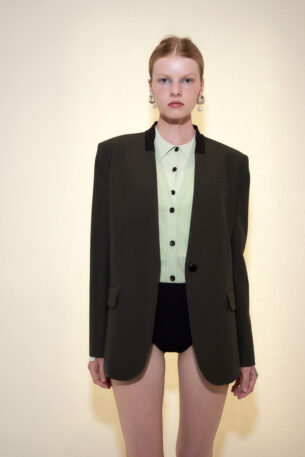
A year ago, she purchased wool fabric from a mill that was certified according to the Responsible Wool Standard (RWS), which ensures that sheep are raised in a humane way. But she later discovered that the certification was just for the mill, not for the wool itself. This was very troubling to her, especially because several other billion dollar fashion houses were using wool from this mill and advertising that it was RWS certified.
“The wool had the RWS certification on it, but in reality, there was no way to ensure the farms were treating the animals correctly or that the farm workers were paid a living wage,” McManus recalls. “I was devastated. I was basically greenwashing, unbeknownst to myself.”
It took time for McManus to spot the error, and then work hard to correct it, so that future batches of wool would be certified all the way back to the farms. To her, this demonstrates that working towards sustainability is a process of continual improvement. It’s about changing the way you operate as you discover better ways of doing things. Now, her focus is on transitioning to fibers that are regeneratively grown, but to do this right will take time, partly because certifications around regenerative agricultures are still in their infancy. “It takes a lot of time to even know what questions to ask,” she says. “And then you need to verify what the mills are saying, because some are not always truthful.
Is sustainability a luxury?
Maria McManus operates squarely in the world of luxury fashion. A trench coat from her latest collection costs around $2,000; a dress is around $1,000; and sweaters go for $500. It’s clear that the brand is targeting a very wealthy consumer.

This wasn’t a deliberate decision, McManus says; it’s just how the pricing worked out. These high quality, ethically sourced materials are more expensive, and ensuring that every worker in her supply chain is well-paid also adds to the cost. Then, there’s the fact that she’s making in very small quantities. “If you’re a startup only producing 30 units of something, there’s only a certain price point you can achieve,” she says. “You would need to order a very large quantity to create a pair of pants for a hundred dollars using the supply chain I have.”
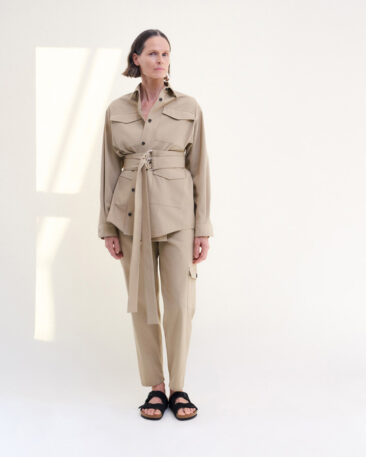
Marchionni, of the Global Fashion Agenda, says that luxury consumers, who have more disposable income, can play an important role in helping to drive the fashion industry towards a more sustainable future. By opting for brands that prioritize the environment, they’re not only getting a more sustainable garment—they’re pouring money into a more ethical supply chain and helping eco-friendly suppliers grow. “This is an investment that will allow the sustainable fashion industry to bring their prices down, and become more accessible to all consumers,” she says.
McManus dreams of moving beyond the rarified world of luxury fashion and making a broader impact. She hopes to one day partner with a mass market brand, like Uniqlo, to bring her eco-friendly products to a much larger audience.
And ultimately, Marchionni believes this kind of scale is what will actually move the needle in the fashion world. “We need to move the entire fashion industry towards more sustainable practices,” she says. “The small group of eco-friendly brands on the market today can play a role in paving the way for real transformation.”
Source: Fast Company




Sorry, the comment form is closed at this time.